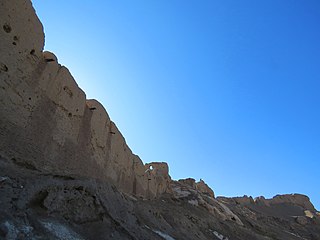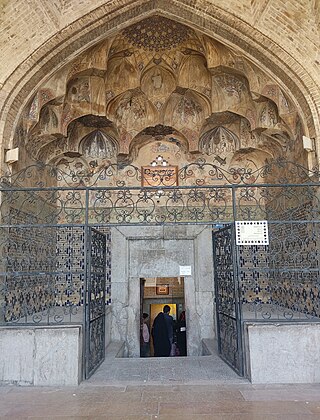13 Sights in Kerman, Iran (with Map and Images)
Legend
Welcome to your journey through the most beautiful sights in Kerman, Iran! Whether you want to discover the city's historical treasures or experience its modern highlights, you'll find everything your heart desires here. Be inspired by our selection and plan your unforgettable adventure in Kerman. Dive into the diversity of this fascinating city and discover everything it has to offer.
Sightseeing Tours in Kerman1. Arg Bazaar
The Grand Bazaar of Kerman starts from Arg Square and ends at Moshtaghieh Square. Each part of the Kerman Bazaar was built during the reign of one of the rulers of this city and is unique and world-famous in Iran due to some of its features. This bazaar is considered the longest order of bazaars in Iran and was mainly built after the eighth century AH. This work was registered as one of the national monuments of Iran on May 15, 2001 with the registration number 3856.
2. Vakil Restaurant and Teahouse
Vakil Complex is located on the edge of the Grand Bazaar and in the center of the old city of Kerman. The elements of the complex are: a bazaar with a length of 200 meters, a bath, and a caravanserai with an area of about 8,000 square meters. This collection was ordered by Mohammad Isma'il Khan Nouri, Vakil al-Mulk, the governor of Kerman, in 1286 AH. A.H. The decorations of the house are rational tiles with geometric designs and its architecture is of the four-porch type. The architecture of the bazaar is inspired by the Safavid era and the bath has benefited from the design of traditional baths.
3. Green Dome
During the rule of the Qaraqitans in Kerman, there are very strong signs of a rich civilization and advanced culture in this region. In this period, many historical buildings with different functions were built in Kerman, of which few traces have survived today. The Green Dome of Gobbe-Sabz is one of the historical buildings of Kerman, which dates back to the period of the Qaraqitai rule about 780 years ago. The Qarakhtaeans of Kerman were one of the tribal kings of Iran who ruled Kerman for nearly 83 years. On the occasion of the title of its founder, Buraq Hajib, the Qutlugh Khan dynasty is also called. As a result of an earthquake on May 27, 1276, many of it collapsed, and today only one porch of this beautiful building remains. This work was registered on January 5, 1932 with the registration number 124 as one of the national monuments of Iran.
4. Khajeh Atabak Mausoleum
The tomb of Khajeh Atabak, which is located in the southeastern neighborhood of the city of Shah's Bazaar neighborhood of Kerman and near the Shah's Bazaar Mosque, is one of the works of the late sixth century AH and belongs to the Seljuk era. This building is the burial place of "Khwaja Atabak Alaeddin Bozqosh", one of the men, elders and mystics of the Seljuk era. The plan of the building is octagonal and has a square space inside, and the dominant decorative element in this building is stucco, and a beautiful mihrab stone is installed on its western side and has beautiful inscriptions in Kufic script. The decorations of the entire building are decorated with turquoise tiles. This work is registered under the number 253.
5. Gonbad-e Jabaliyeh
Jabalieh or Rock Dome, also known as the Gabri Dome, is located in Kerman, Iran. Gonbad-e Jabaliyeh also goes by the names Gonbad-e Jabaliyeh, Gonbad-e Jabalīyeh, gnbd jblyh, گنبد جبليه The dome, a place of historical importance in Iran, has been constructed of stone and brick, though the building is of stone and gypsum, and its architectural effects have been inspired from the Sassanide period.
6. Takht-e Dargah-e Gholi Beyg
Takht-e-Dargah Qoli Beg is a mansion located in the southeast of Kerman city and in the southern corner of Qaleh Dokhtar Mountain. This place is the tomb of one of the descendants of Biram Beg named Dargah Qoli Bey. Dargah Qoli Bey was one of the emirs of the late Safavid period and the head of the Afshar tribe in Kerman. He was the only famous person of Afshar whose name has been on the lips for 150 years after Ganjali Khan.
7. Harandi Museum
Around 1290 A.H., Mohammad Reza Khan Adl al-Sultan, who was one of the military officials of Kerman, built a recreational garden outside the city wall of Kerman. The area of this garden is 25,000 square meters. Adl al-Sultan was a descendant of Vakil al-Mulk, the governor of Kerman, the son of Murtaza Qoli Khan, the second (second) vakil al-mulk and the brother of Mirza Husayn Khan Adl al-Saltaneh. Adl al-Saltaneh was later given the title of "Sardar al-Nusrat".
8. Masjed-e Jāmé of Kerman
Jameh Mosque of Kerman is a mosque located in Kerman, Iran. The mosque was built at the time of Mubariz al-Din Muhammad, Muzaffarids, in the 14th century. The western side of the building features a high portal which has been decorated with decorative tile-works and a watch tower.
9. Museum of Zoroastrianism
The Zoroastrian Museum is located in the city of Kerman and is the first and only museum of Zoroastrian anthropology in the world. The construction of this museum began in the 1990s with the efforts of Behdinan Farzaneh, Hormozdiar Ashidari, and Mahindokht Siavoshian, and was completed in 2001.
10. Ganjali Khan Mosque
Ganjali Khan Mosque is located on the northeast side of Ganjali Khan Square and next to the Ganjali Khan School, which was built around 1007 AH by Ganjali Khan, the ruler appointed by Shah Abbas Safavid. This mosque was in fact the place of worship of the ruler of Kerman, and according to another narration, the mosque was the Ganjali Khan School.
11. Moshtaghiye Dome (Three domes)
Mushtaqieh Dome also romanized as Moshtaqiyeh Dome or Moshtaghieh Dome is a historic funerary monument and religious complex located in the city of Kerman, Iran. It is also known as Three Domes (سهگنبدان). The present building dates back to the reign of Mohammad Shah Qajar in 1838 and is number 525 on the list of national monuments of Iran.
12. Ghale Dokhtar
Qal'eh Dokhtar is a clay castle in Kerman, Iran. It was built in the times of the Median kingdom. During the Seljuk period the castle was considered a refuge for the Kermanians. Today it is a historical site of Kerman, lying in ruins.
13. Hamam -e- Ganjali Khan
Ganjali Khan Bath is one of the buildings of the Ganjali Khan complex in Kerman, which was built in 1020 AH. Ganjali Bey, nicknamed Ganjali Khan, was one of the rulers of Kerman during the reign of Shah Abbas who did important construction works in Kerman. In order to have public promenades in the middle of the city, he first created a large square. This square, which is more than 100 meters long and 50 meters wide, is surrounded on four sides by special buildings including a school, a mosque, a bazaar and a bathhouse, four souqs, a cistern and a mint and is an excellent collection of civil works of the Safavid era. Its architect is Master Sultan Mohammad Memar Yazdi.
Share
How likely are you to recommend us?
Disclaimer Please be aware of your surroundings and do not enter private property. We are not liable for any damages that occur during the tours.
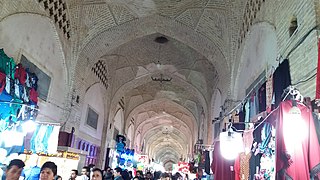
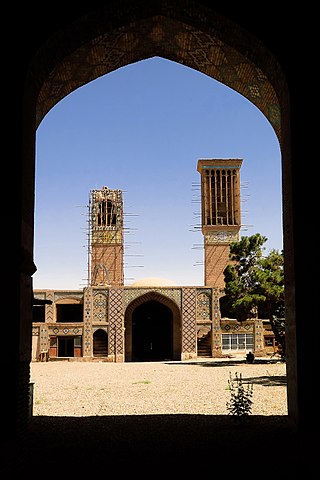
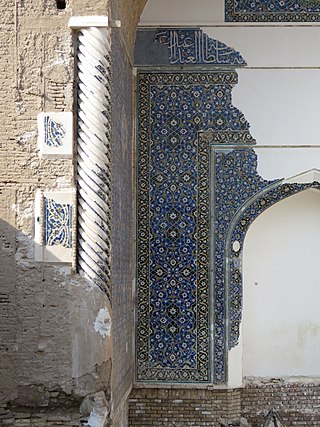
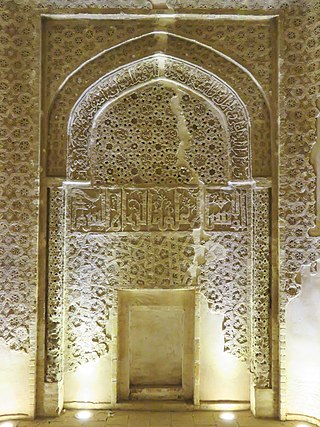
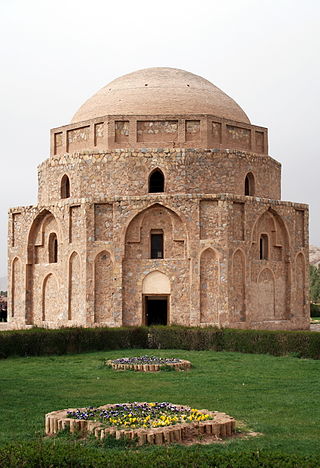
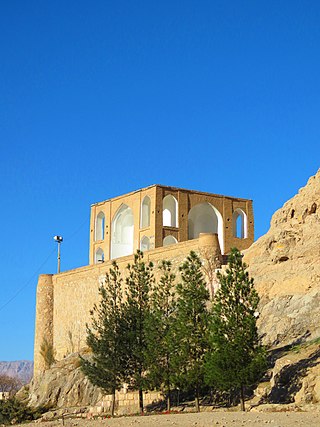
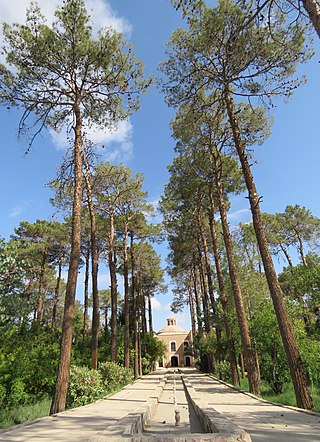
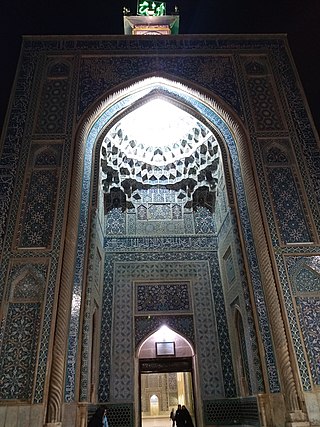
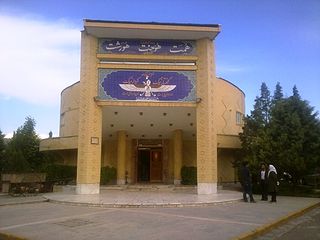
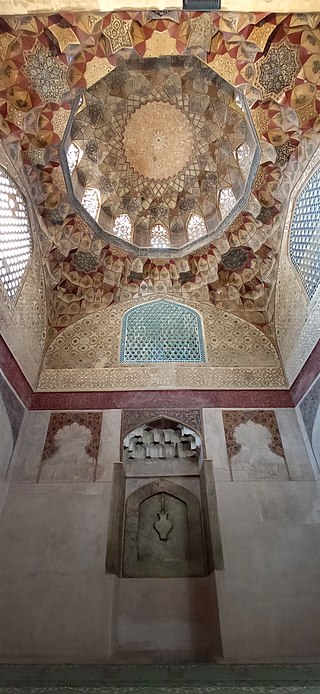
.jpg)
